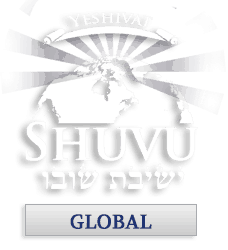Now on the last day of the festival, Hoshana Rabbah, Yeshua stood and cried out, “If anyone is thirsty, let him keep coming to me and drinking! Whoever puts his trust in me, as the Scripture says, rivers of living water will flow from his inmost being!” (Now he said this about the Spirit, whom those who trusted in him were to receive later — the Spirit had not yet been given, because Yeshua had not yet been glorified.) On hearing his words, some people in the crowd said, “Surely this man is ‘the prophet’”; others said, “This is the Messiah.” But others said, “How can the Messiah come from the Galil? Doesn’t the Tanakh say that the Messiah is from the seed of David and comes from Beit-Lechem, the village where David lived?” So the people were divided because of him. Some wanted to arrest him, but no one laid a hand on him. (CJB)
John 7:37-44
The seventh day of Sukkot is known as Hoshana Rabbah. It is not a Moed, but the culmination of the Festival of Sukkot. Every day of Sukkot people would come into the temple carrying their Lulav and Etrogs and walk a circuit around the altar. While walking the circuit, they would recite prayers and cry out, “hoshia na!” Please save. On the last day of Sukkot, seven circuits, or Hoshanot, were processed around the altar with Lulav and Etrogs. Hence the name of the day, Hoshana Rabbah, or, the great hoshia na.
From midnight until dawn every morning of Sukkot, a ceremony was performed in the temple called the Nisuch HaMayim, or the Beit HaShoeivah, the water drawing ceremony. The Kohayns would gather in the Temple courtyard and take a golden pitcher and ceremonially walk out of the temple complex through the water gate. They would walk from Mount Moriah downhill, through what is today called the City of David until they came to the pool of Shiloam. They were accompanied by Jerusalemites that lined the way with singing, dancing, and torche. They were playing musical instruments and shouting with joy. The Kohayns would fill the golden pitcher with water from the pool and proceed back up to the temple, arriving at Dawn. The Kohayn would climb the altar and pour the water from the golden pitcher into a golden cup that would overflow into a channel in the altar and would wet the side of the altar with the water from the pool of Shiloam. This was a special ceremony for the Pharisees, but the Sadducees disagreed with this ceremony and hated it.
Approximately 100 years before Yeshua, the King and high priest, Alexander Yannai, was forced by the Sanhedrin and the people of Judea to participate in the water drawing ceremony. Alexander Yannai showed his distaste for the ceremony. After he climbed the altar, instead of pouring the water into the cup, he poured the water on his feet. The people who gathered in the courtyard, Pharisees, were incensed. They began to throw their Etrogs at Alexander Yannai. They even broke off a corner of the altar and started throwing the rocks at Alexander. He feared for his life and called in the temple guard. Over 3000 Pharisees were killed in the temple complex that day.
Since the time of Alexander Yannai, the water drawing ceremony was understood to be a venue for political statements. So, when Yeshua proclaimed, all who thirst come to me and drink, it was understood to be a political statement. Yeshua was declaring himself to be the Messiah. John records that the reactions of the people were mixed, as one might expect. But there was no longer any doubt in the minds of the people of Judea that Yeshua had proclaimed himself Messiah. Yeshua used the imagery of the water drawing ceremony to indicate that the people should follow Him. If there was any doubt regarding Yeshua’s intentions in the minds of the Sanhedrin, that doubt was erased on Hoshana Rabbah.
